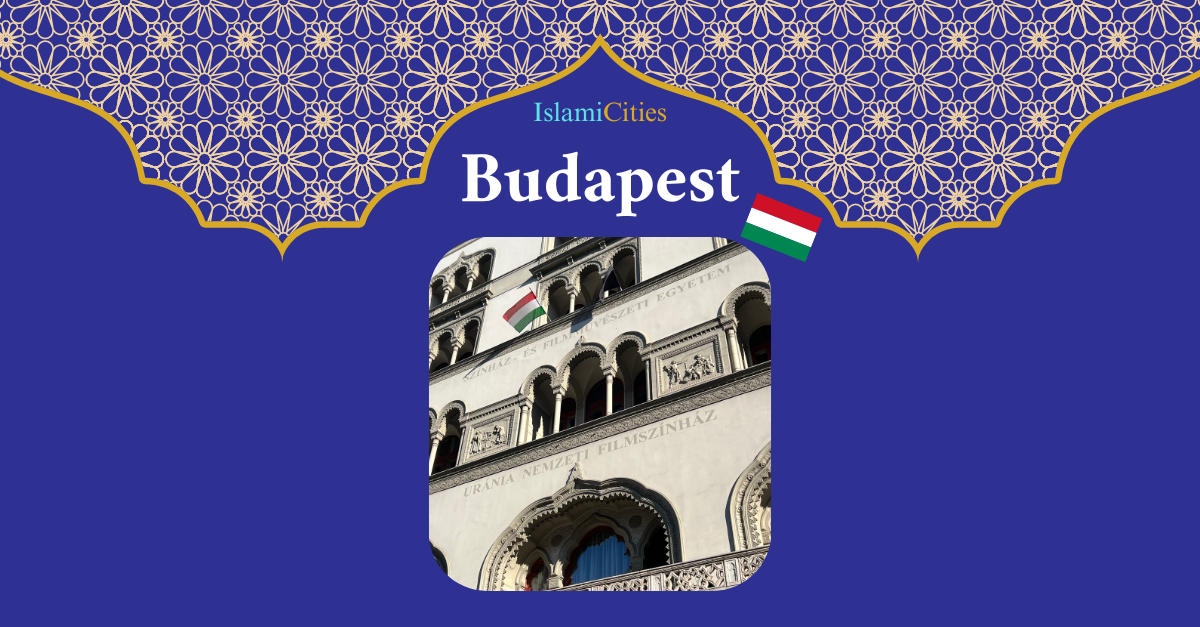The City of Bridges is characterised by Neoclassical, Romanesque, Gothic, Renaissance, and Baroque Revival architecture. It surprisingly also has Ottoman elements, due 3 sieges and a 150-year occupation following the Battle of Mohács in 1526, headed by Sultan Suleiman (“the Magnificent”). The city of Buda became the centre of Ottoman provinces.
During the Ottoman times, there were around 300 Turkish words used on a daily basis by Hungarians. Today, 30-35 words are used in daily life, such as kávé (coffee), kioszk, joghurt or pite (pie).
Here are my discoveries! Find the full gmaps itinerary here 🙂.
Day 1
1 · Veli Bej Bath
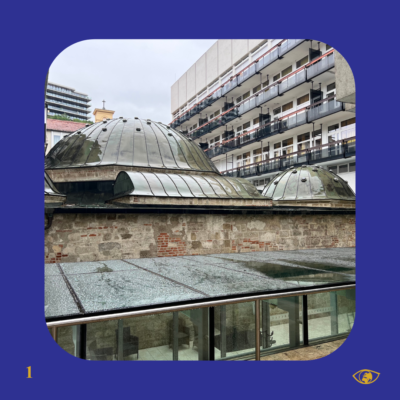
Veli Bej Bath
Located in the same building as Hotel Csaszar, it’s one of the oldest and largest Turkish baths in Budapest. Commissioned by pasha Szokullu Musztafa, it was built in the 16th century during the Turkish era, and proved one of the most beautiful baths of its time.
The original stone building survived the passing of time and regained its original splendour with recent renovations. Remains of the original clay plumbing built by the Turks can be seen when heading for the saunas from the pools.
Baths in Budapest Hungary has around 1,500 thermal water sources and more than 270 medicinal waters that are nationally recognised. Budapest is one of the few places in the world that has original working Turkish bathhouses, earning it an alternative nickname: the ‘City of Baths'. In the Middle Ages, between the 16th and 17th centuries, Turkish pashas ruled the Buda Castle and used the geothermal spring waters under the Buda Hills to build their ritual bathing places. Buda had 7 to 9 baths altogether during the 150-year Ottoman era, but some of them didn’t survive the passing of time. Unlike the contemporary Turkish steam baths, the Turkish baths in Budapest are actual warm thermal spring baths with hot waters in octagonal pools - called “ilidzas” instead of hammams. In addition to the historical pool, there are sometimes 3 smaller pools around it, at different temperatures.
2 · Tomb of Gül Baba & Rosegarden
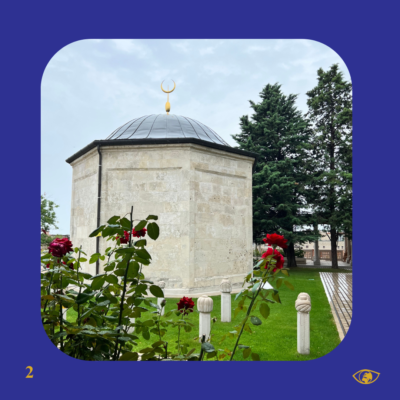
Tomb of Gül Baba
This is the most remote pilgrimage site of Islamic culture north of the Ottoman Empire.
Gül Baba – or “Father of Roses” after the one he wore on his turban – was a dervish of noble character, who was wounded during the siege of Buda Castle and later died in Matthias Church in 1541, which at the time had been converted into a mosque. The roses Gül Baba cultivated were famed for their beauty, even in faraway lands, and the current site displays a beautiful garden with roses and other flowers on its hill.
The tomb over his grave was built by the third Pasha of Buda, and there are fine ceramic glaze writings in symmetric Islamic calligraphy on the wall of his mausoleum. @gulbabaturbeje_official
3 · Király Thermal Bath
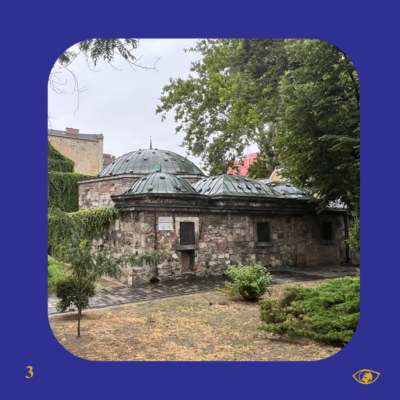
Király Thermal Bath
It is the oldest bath, sourcing water from the natural geothermal springs of Lukács Baths. Its water contains minerals like sodium, calcium, magnesium bicarbonate, and sulfate chloride.
Unfortunately, the bath did not survive the Covid pandemic and is permanently closed since 2020. It however seems to be scheduled for renovation works!
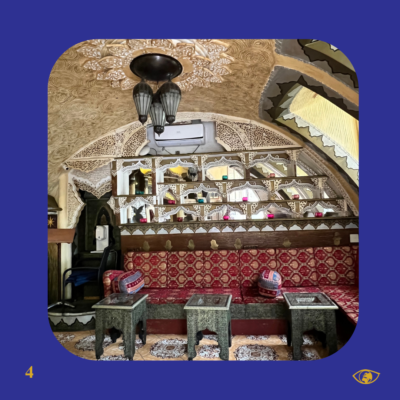
Habibi Vár
4 · Habibi Vár
This authentic shisha lounge & restaurant near Buda Castle is characterised by its charming oriental decor with domed ceilings, coloured lanterns, and oriental-style seats. Its atmosphere recreates the magical culture of the East and beauty of the Arab world.
I sat down for a Moroccan tea on a quiet afternoon and felt out of time! @habibi_var
Day 2
5 · Rudas Thermal Bath

Rudas Bath – @welovebudapest.com
Built by the Ottomans in 1566, this is the Aston Martin of thermal baths, combining authentic Islamic style and a rooftop pool!
As can be read on the Hungarian inscription on a stone atop the Juve spring near the octagonal pool, baths were used by Sokollu Mehmed Pasha, governor of Buda between 1566 and 1578. This spring is believed by locals to have a rejuvenating effect – and I believe it, as it tastes quite awful!
The baths were used as a location for the opening scene of Red Heat, the 1988 action movie starring Arnold Schwarzenegger.
6 · Párisi Udvar Hotel
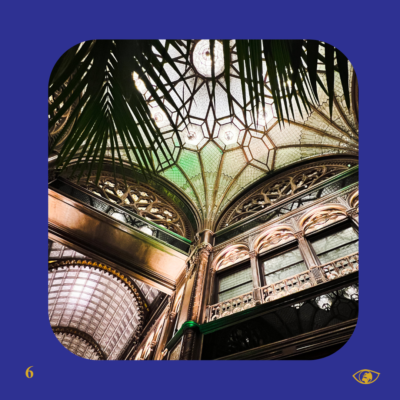
Párisi Udvar
First built in 1817 as a neoclassical shopping arcade, and probably modelled after the famous Passage des Panoramas in Paris, the Párisi Udvar was rebuilt between 1909 and 1913 by a Hungarian bank in need of stylish new headquarters.
The hotel incorporates elements from Art Deco, Neo-Gothic, Moorish, and Art Nouveau design, with glass domes, turrets, stained glass panels, gargoyles, and impressive ceramic Zsolnay tiles on the roof.
Filmed in 2011, Tinker, Tailor, Soldier, Spy, starring Colin Firth and Tom Hardy, offers a glimpse of the building before renovation began. @parisiudvarbudapest
7 · Urania National Film Theatre
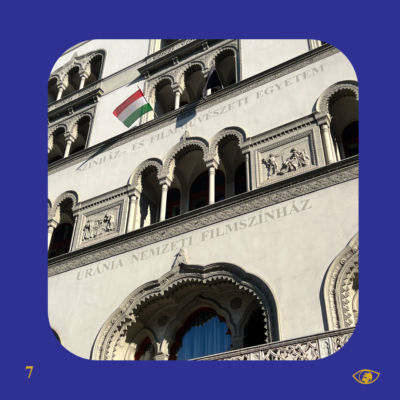
Urania National Film Theatre
This was not part of my shortlist but proved a fanstastic serendipity!
The design of the palace, built by Henrik Schmahl in the mid-1890s, incorporates the Venetian Gothic and the Eastern Moorish styles. The Hungarian Academy of Sciences was looking for a theatre where the Uránia Scientific Society could hold presentations illustrated by moving pictures. The building was then rented from 1899 by the Uránia Society and was given the name Uránia Hungarian Scientific Theatre.
In 2006, the Uránia National Film Theatre was awarded the European Union’s monument protection prize, Europa Nostra, for outstanding monument restoration. @uraniabudapest
8 · A legendary inscription (bonus)
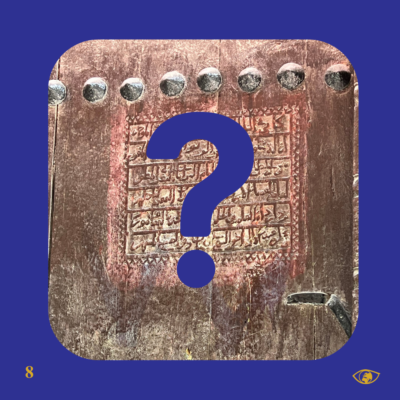
A mystery to be solved at Vienna Gate…
While researching prior to my trip, I came across these two websites that mentioned a memorial stone inscribed in Arabic, close to Buda Castle’s Vienna Gate, without providing an illustration.
A tribute to Vizir Abdurrahman Abdi Arnavut Pasha, who died during the Battle of Buda, it apparently reads: “He was a heroic enemy, let him rest in peace”.
Let me tell you that I spent a good 20 minutes around Vienna gate looking for this mysterious stone, asking locals and guides around, yet, I could not find it.
Was it transferred to a museum? Did it exist in the first place?
Please let me know if you have more information!
Find my article on Islamic Barcelona here and Islamic Paris here. IslamiCities is a series showcasing Islamic influence in European cities through art, architecture, culture, lifestyle and gastronomy. This quest came to light pursuing my passion and fascination for Islamic art and architecture as well as the Arabic language. For a time reference, the weekend took place in July 2023.

